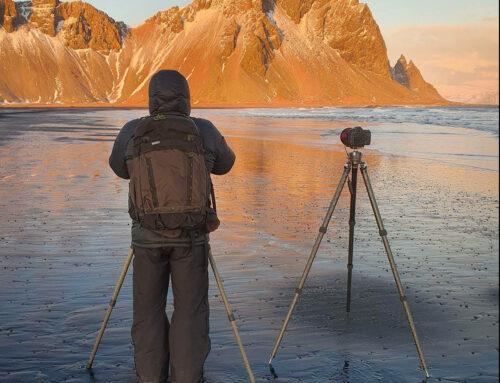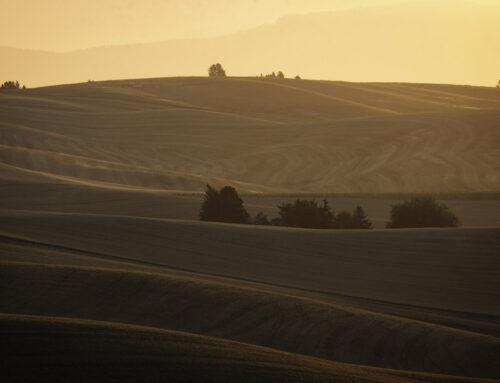If you haven’t read the adventures of our Alaska trip to photograph the brown bears feeding on salmon as well as amazing landscapes, please read my previous posts.
I thought I’d give a few parting thoughts about the gear I took on this adventure and what I used, and didn’t use, on the trip. Before the trip, I spent considerable time reviewing which camera and personal gear I thought I should take. I wrote a lengthy post about it titled Preparing for a Photo Trip. I’m happy to say that most of my thoughts and considerations proved to be fairly accurate, with some notable exceptions.
Whenever you are traveling by air, especially on small propeller airplanes, weight limits are a serious consideration and you need to abide by the limits set by the carrier. On this Alaska trip, we had a weight limit of 75lbs of luggage per person; photo gear, personal gear, carryons, etc….it all got weighed. Thankfully I came in at 63lbs for all of my gear. I fear I would have been over this limit if I brought my normal compliment of equipment and belongings.
Here are some key callouts I’d like to make as recommendations when considering such a trip…
Bodies and Lenses
I did bring two bodies, my Fuji X-T2 which was my primary and a Fuji X-T1 as a backup. Thankfully I never had to use my backup body during my trip. I have been on trips where my primary camera experienced a problem and I had to rely on my backup. When traveling far afield (usually at considerable expense) you DO NOT want to be left without a usable body. I consider it trip insurance to have a second body so I can continue shooting if something happens to my primary.
As for lenses, I thought long and hard about which lenses to bring, balancing what I wanted to bring against the weight limit and what I thought I’d be shooting and how I’d be shooting. In the end I decided on 4 lenses
- Fuji 10mm-24mm ultra-wide angle
- Fuji 16mm-55mm wide angle / all purpose lens
- Fuji 50mm-140mm medium telephoto lens
- Fuji 100mm – 400mm telephoto lens
- Fuji 1.4x teleconverter
At the end of the trip I assessed my lens choice and came away with these conclusions….
- The 100-400mm stayed on my camera about 80% of the time in the field
- The 1.4x was on my camera with the 100-400mm about 50% of the time
- The 16-55mm was used sparingly, maybe 20% for wide angle landscape shots and for shooting video
- The 10-24mm and 50-140 never made it out of the bag! I found no need for these lenses and will not be bringing them back on my next trip.
Batteries and Memory Cards
Because I shoot a mirrorless camera, my battery consumption is usually higher than my previous DSLR. As such, I bought a few extra batteries before the trip and a battery pouch (airline safe). In total, I had 4 batteries in a pouch, 3 in my X-T2 and 1 in my X-T1 for a total of 8 batteries. To charge these each night I paid the weight/size penalty and brought my Watson Dual Charger (video HERE) It performed flawlessly and each of my batteries were charged to the fullest for the days shooting.
Thankfully I never was without a charged battery during the trip. Nothing is worse than having to shoot sparingly because you’re trying to conserve battery power. For a big trip such as this, it is cheap peace of mind to bring more batteries than you normally travel with.
And of course with memory cards, bring all that you have! It does somewhat depend on your process/system for shooting and backing up images while traveling. For me, I prefer to 1) not stuff each card to it’s fullest capacity (is thought to possibly contribute to card corruption) and 2) if at all possible, not delete any images on the road.
When each memory card is almost full, I’ll back it up to my computer and then store it in my card pouch. This way I have at least two backups of my daily images….one on the computer and one on the card. Only in desperate situations will I delete off my card to free up space. (I didn’t format my cards from Alaska until I had two backups on my home system and had reviewed all of my images) Cards are cheap and having enough for an entire trip (without deleting) is a no-brainer for me.
Filters
For this trip, I cut down my usual compliment of filters (in a smaller filter bag that would fit in my backpack) knowing that what I would be shooting wouldn’t require a lot of filter use. What I brought was…
- Graduated ND filters: 2 & 3 stop (which I didn’t end up using but can see a need for)
- Vari-ND Filter: I used this for video as well as blurring the moving water
- 10 Stop ND Filter: Never used this filter either
- Circular Polarizer: Used this a lot as we were constantly shooting some water
It’s up to you if you want to bring filters. At a minimum I’d recommend to bring a Polarizer
Tripods
As a landscape photographer, a tripod is a mandatory, essential tool for getting tack sharp images. So heading off for this trip I brought my heavyweight Gitzo 3 series tripod with BH-55 ballhead. Knowing I’d have my long lens on for much of the trip, I wanted the most stable platform I had (weight limit be damned!)
In the field I used my tripod every day and for every shot. I had no regrets about bringing it and couldn’t imagine a photo trip without it. I will say though that at the shutter speeds we were shooting at, not having a tripod is a real possibility if you really don’t want to carry one Crank up the ISO, get that shutter speed over 1/2000 and the majority of your shots will be tack sharp (with good technique of course).
Not having a tripod seems a bit blasphemous to me, but it’s a real possibility for those who prefer to handhold.
Portable Hard Drives
If you have one, bring it! Each night I downloaded my images from my cards to my Samsung SSD drive. The sheer volume of images I shot on this trip would have exceeded my computer hard drive capacity so I needed a larger storage option. I have various portable drives (most are a normal type of drive with a spinning disk inside) but recently I purchased a solid state drive and LOVE IT. It’s smaller than a pack of cigarettes and lighter than one too. THIS is the model I have and am enamored with it and have had no problems.
Video
If you’re shooting any video, as I did, my tripod and windsock were the most important pieces of gear, followed closely by ND filters to achieve a cinematic shutter speed.
I also brought along the Sony Action Camera (yea catchy name) for quick video shots. I kept this in the front pocket of my waders at all times and it was great to quickly pull it out and start shooting video of a bear walking by, a water landing in the airplane, etc without having to do the full set up with my Fuji camera.
Personal Gear / Clothing
Well, this is pretty personal (ha ha) and I can only share my thinking for myself. In July/August in Alaska, the weather is fairly mild (40’s – upper 70’s) however the weather can also be quite variable. Growing up hiking and climbing, the best thing I can recommend is to bring several layers of clothing instead of one big insulated jacket. A base layer, several mid-layers and a wind/rain proof outer layer are the best way to manage your temperature throughout the day and in variable weather conditions. Peel off layers when it gets warm, pile them on when it cools off towards evening. And, wearing waders and standing in the cold water all day I was very thankful to have a base layer on my legs to help keep me warm throughout the day.
Hats and sunscreen proved to be important on our trip as the sun up there can be very strong, even if it’s not that warm. When it cooled off (or earlier in the morning) having an insulated hat and light insulated gloves helped to ward off the chill.
And then, everything else is really up to you and what will make you comfortable.
if you have any thoughts or comments please feel free to leave them here







Leave A Comment